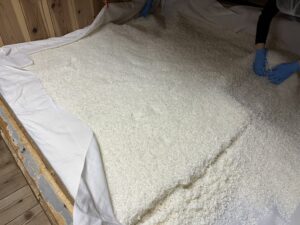What is acidity in sake? – An important element that gives depth to the flavor

In addition to “sweet” and “dry,” there is another important keyword when discussing the taste of sake. That is **”acidity.
What does acidity taste like in sake?
Many people may have the image of “sour” when they hear the word “acidity. However, the acidity of sake is different from the sharp acidity of lemon or vinegar.
This acidity gives sake a deep and sharp flavor that is not just sweet or just spicy.
Where does the acidity in sake come from?
The main components of acidity are the following organic acids:
Lactic acid (soft and full-bodied sourness)
Malic acid (refreshing and fruity sourness)
Succinic acid (with a balance of umami and bitterness)
Acetic acid (aromatic and impactful sourness)
These are naturally produced during the fermentation process of the sake mother or mash, and their quantity and balance vary depending on the type of yeast and production method.
What are the benefits of acidity?
It goes well with food: It refreshes the palate, especially when paired with fatty or salty food.
It gives a three-dimensionality to the taste without being biased toward sweetness or umami.
Tightens the impression of the aroma: Balances the fruity ginjo aroma.
Acidity
Sake has an index called “acidity,” which quantifies the amount of acidity.
Around 1.0: Light and gentle acidity
1.5 or higher: Sake with a strong acidity and a full-bodied flavor.
For example, our “Genryu Takatsugawa Sumikawa Junmaidaiginjo” has an acidity of 1.6, which is characterized by a firm acidity that gives it a strong local sake flavor without being dry or dry.
Lastly: Tips for tasting acidity
The following tips are also recommended for tasting acidity:
Drink slightly chilled (to enhance the acidity)
Match it with fatty food (the acidity resets the taste).
Try drinking the same brand at different temperatures.
Sourness plays a hidden supporting role. We hope you will try it as a new point of view when selecting sake.








